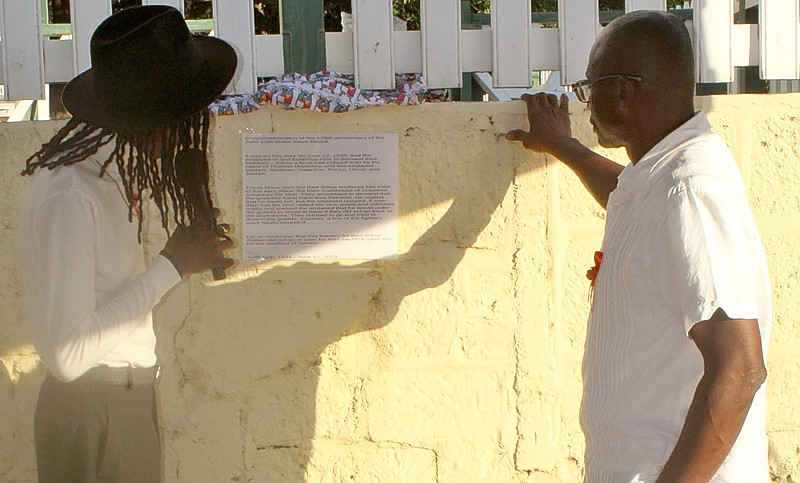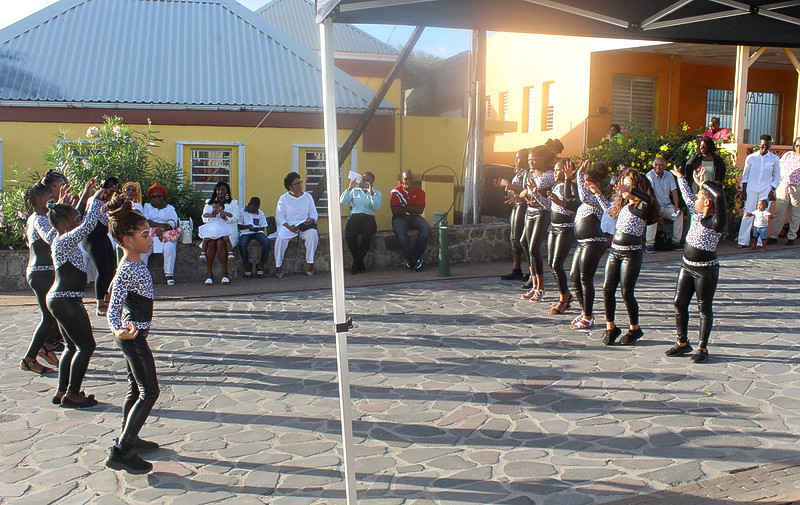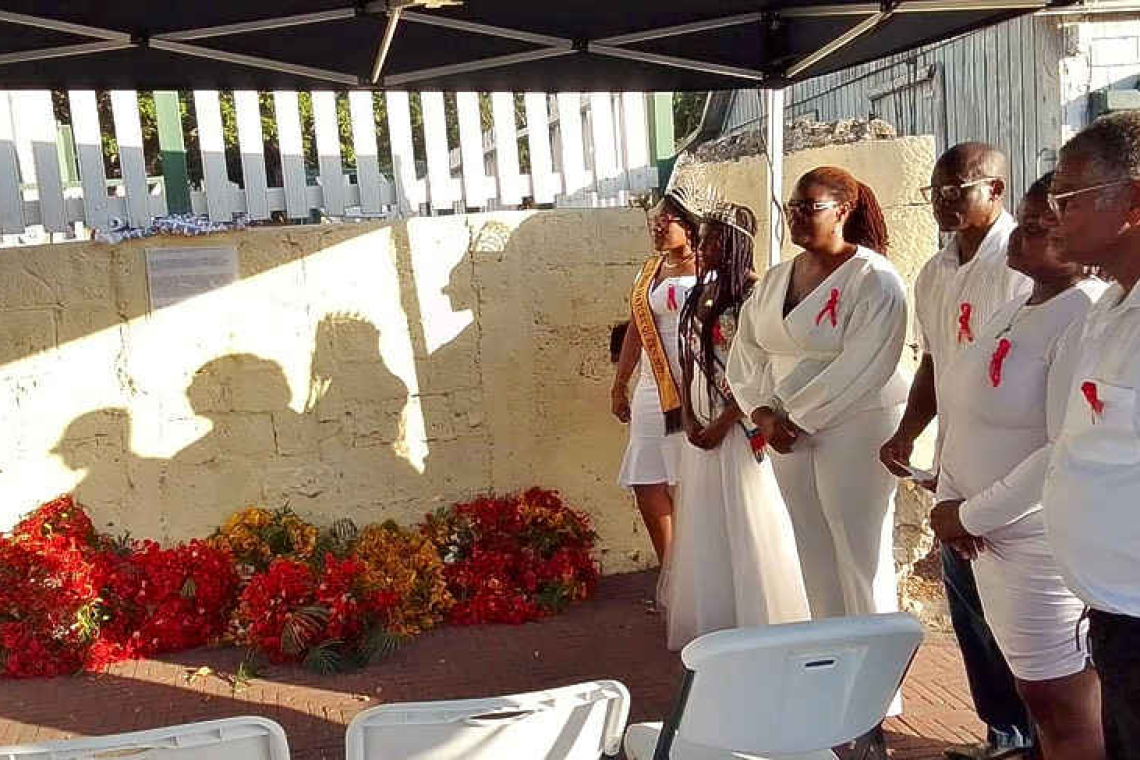Six wreaths were laid in honour of the leaders of the Statia Slave Revolt.
ST. EUSTATIUS--The St. Eustatius Department of Culture and Events hosted a brief ceremony on Monday, June 12, in remembrance of the slave revolt that occurred on this date 175 years ago. The ceremony took place at Green and White Cove on Fort Oranjestraat, where the revolt took place.

Island Commissioner Reuben Merkman (right) and Master of Ceremonies Ishn Courtar unveiling a plaque during the 175th anniversary of the Statia Slave Revolt.

The Bright Morning Stars performing during the ceremony on Monday, June 12.
Many wore white clothing during the ceremony, which was attended by Island Commissioners Reuben Merkman and Arlene Spanner-Schmidt and Roman Catholic priest Lukas Batmomolin, who performed the invocation.
Master of Ceremonies Ishn Courtar said that Statians are known for their hard work, determination and perseverance. “Because of this our modern-day generation is indeed resilient. It is because of these great men that 160 years later on July 1, 2023, we will celebrate the 160th anniversary of emancipation. The resilience of these gentlemen will forever live on. It will live on in the generations present and the generations to come,” Courtar said.
Department of Culture and Events programme manager Nastasha Radjouki said that June 12, 1848, was a day of great significance in the history of Statia and the wider Dutch Caribbean.
On this day in 1848 the enslaved were led by free man Thomas Dupersoy and five enslaved leaders Abraham, Joseph, Prince, Oscar and Valentine. They rose up and risked their lives to demand freedom. These six men led free and enslaved Africans to the residence of Lt. Governor Johannes de Veer. They demanded their freedom, increased rations, and more free hours.
The Lt. Governor replied that he could give them their freedom and called in the civic guard and the voluntary militia. He warned the enslaved that he would order the guards to shoot at them if they did not go back to their plantations. The enslaved refused and they attempted to disarm the guards. Then, guns were fired and the fighters were hit.
The enslaved, even though they were hurt, were resilient and fought back with stones and rocks and sticks, but as it was an uneven fight they had no choice but to retreat to the plantations. A group of militia shooters advanced on the fighters, killing some instantly and injuring several more.
“The six leaders of the uprising were exiled to Curaçao, but that didn’t stop them,” Radjouki said. “After this uprising one of the enslaved leaders sent out a death threat to
the slave masters on this island. Because of this, the largest plantations owners decided to give the enslaved workers a wage in fear that a repeat revolt would happen.”
This was considered the first small stepping stone on the path to freedom. The enslaved on Statia did not win their freedom that day, but their bravery and sacrifice forced the Dutch government to accelerate the process towards abolition.
“The enslaved had experienced a force they did not think that they would have experienced and found out that by working together they could unleash horrors upon any enemy. … It is said that Emancipation Day is a passive celebration because we were given our freedom by the Dutch government, but the Statian slavery revolt is a celebration. It is a celebration of Statia’s fight for freedom, courage, initiative and alliance,” said Radjouki.
“Resilience has embedded itself in the DNA of Statians to this day, and it is the foundation of the Statian culture. Thanks to Thomas Dupersoy and the five enslaved leaders Abraham, Joseph, Prince, Oscar and Valentine, and all the resilient men and women who followed them and fought here, I say, today I am, because they were.”
After performances by The Daughter of the King Dancers and The Bright Morning Stars dance group, Commissioner Merkman unveiled a plaque commemorating the Statia Slave Revolt.
After one minute of silence in remembrance of Statia’s freedom fighters, wreaths were laid for the six leaders of the slave revolt by Commissioner Merkman, Radjouki, Carlos Lopes of St. Eustatius Monuments and Historical Foundations, Little Miss Statia Rikaylia Chamberlien, Miss Mature Maliska Brown, and Daniela Richardson of the Department of Culture and Events.







